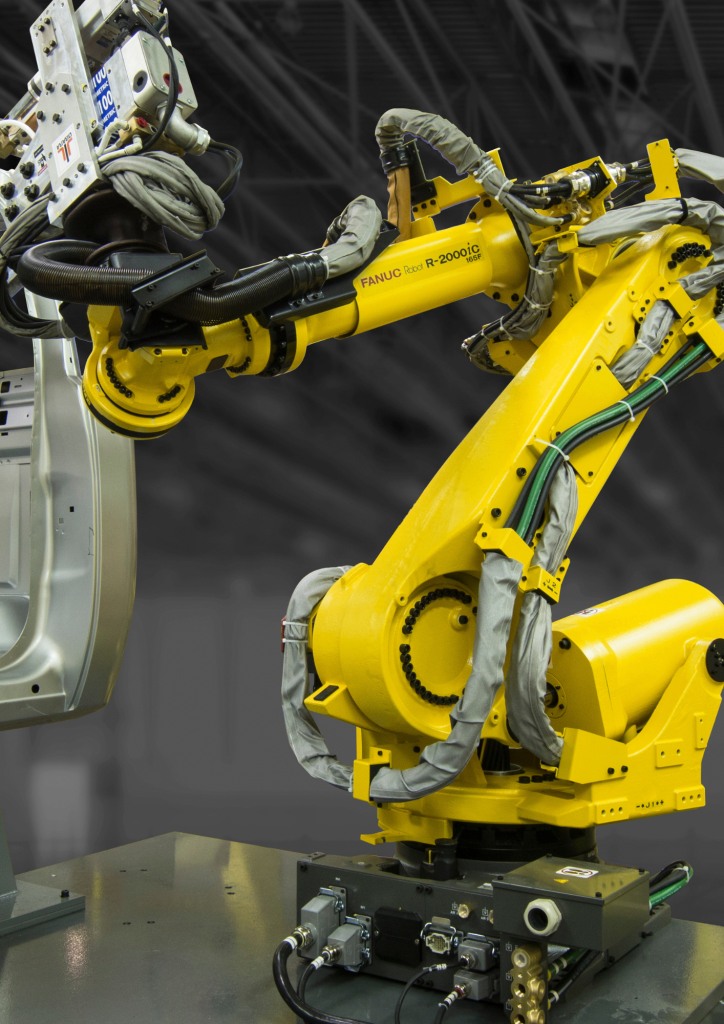Robotic arms are at the center of modern manufacturing and production change the norms in a manner previously thought to be not possible. They blend accuracy, safety and efficacy. These mechanical marvels, often called robot arms, have become indispensable in the global manufacturing industry, driven by the urgent necessity to cut operating costs and maintain high standards of quality. By integrating robotic arms into production lines, manufacturers are not just cutting costs but also revolutionizing workplace safety and efficiency. We’ll investigate how these groundbreaking machines are changing the landscape of industrial production.
The main reason for the rapid growth in robotic arm adoption is cost efficiency. Factories have to constantly work to minimize manufacturing errors, cut down on production waste, and cut down on incident rates in the workplace. A robotic arm addresses these issues head-on. Robots are more precise than humans when it comes to performing repetitive tasks, which means they can reduce cost and eliminating costly mistakes. For instance, in high-volume industries such as automotive manufacturing, robot arms perform precise welding and parts placement, ensuring flawless assembly each time. This accuracy can translate into significant savings since fewer damaged parts mean less work and wasted.

Image credit: automatedsolutions.com.au
Safety is another important aspect of the robot arm revolution. A lot of manufacturing processes, such as working with hazardous materials or employing heavy machinery could be hazardous for humans. Robots allow businesses to eliminate their workers from hazardous working environments and minimize accidents at work. Robotic arms, constructed as a chain of joints which move are able to mimic the functions of human arms without causing physical injury. Equipped with end effectors that can be programmed to work essentially robotic hands they can perform tasks like spinning, grasping or welding in situations that would be unsafe for humans.
Robotic arms are revolutionizing various industries due to their ability. Robot arms can handle many different tasks. From assembly for automobiles to electronics production. The programmability of these robot arms lets them perform complicated tasks such as painting or applying fiberglass at a remarkable level of consistency. Robotic arms have transformed the palletizing process in warehouses, automating it with speed and accuracy. Automation does not just increase efficiency, but also reliability as robot arms are able to work without tiring.
One of the most intriguing advancements in this field is the rising popularity of collaborative robots also known as cobots. These robots collaborate with human employees. As opposed to traditional industrial machines that are limited to isolated cells, cobots outfitted with robotic arms are created for safe, seamless interaction with humans. Cobots that have robotic arms are able of performing routine or heavy lifting tasks in a factory that allows humans to focus on more complicated responsibilities. This collaboration increases productivity and creates a safer workplace, since cobots can be programmed so that they can adjust or stop their movement when an individual is within.
Robotic arms make a huge impact on modern manufacturing, and not just in terms of safety, but also efficiency. Their capability to do tasks like welding, assembly, or handling materials with precision has made them indispensable in high-risk industries. For instance, in manufacturing of automobiles, a robot arm can move and rotate components during assembly, ensuring an exact alignment with no human intervention. Similarly, in electronics, robot arms handle delicate components with care, reducing damage and improving output quality.
As the world’s industries continue to develop the role of robotic arms will continue to grow. Because they are able to cut costs, improve safety, and adjust to various tasks robots are the cornerstones of the future manufacturing. With cutting-edge technology coupled with human innovation robot arms aren’t just tools they’re partners in technological advancement, driving innovation and revolutionizing the way we build the world around us.